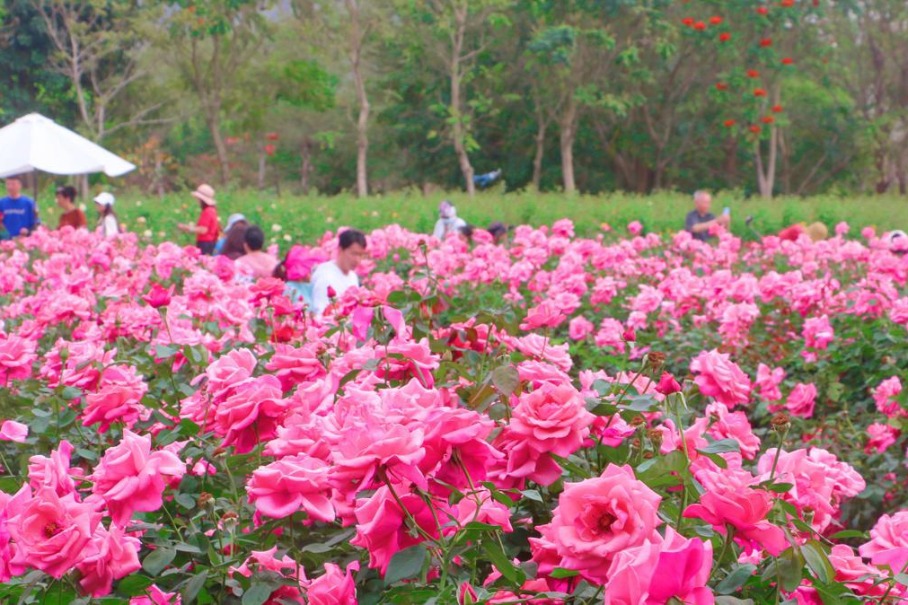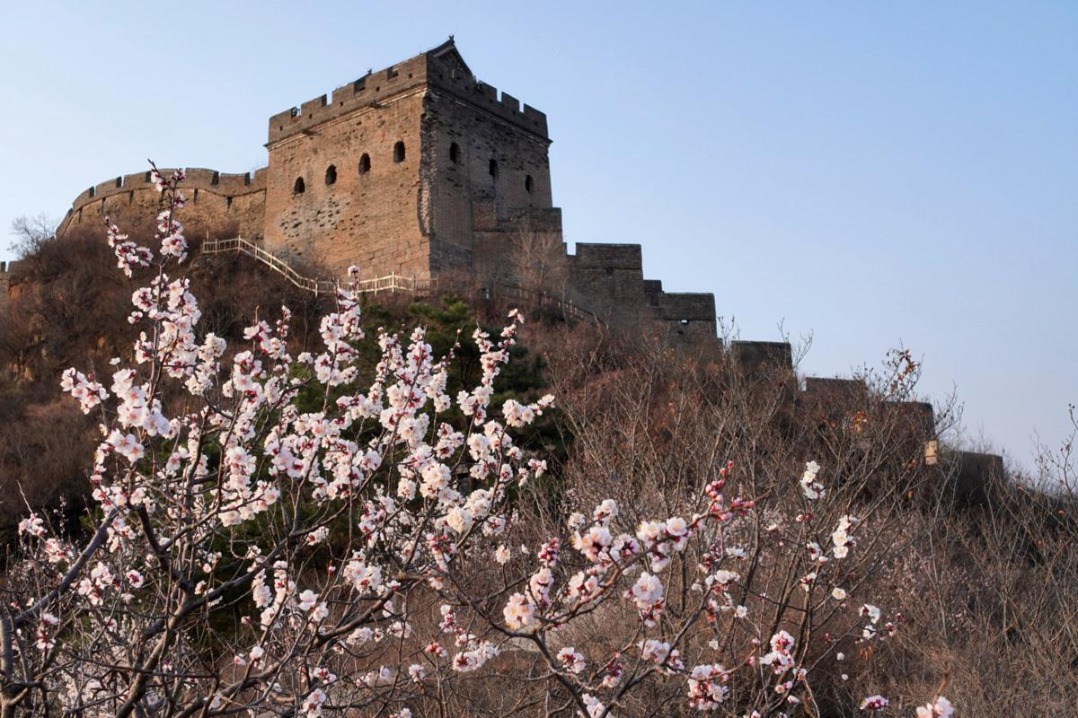A 6-day trip through Shanghai, Jiangsu and Zhejiang

Food tips:
Nanjing is abundant in agricultural produce and the local raw materials can be cooked in many different ways. Nanjing's duck dishes are well-known throughout the country with records singing the dishes’ praises going as far as back as 1,400 years ago to the Southern Dynasty. Besides salted duck, there’s pressed salted duck, Jinling roast duck, barbecued duck, Jinling sauced duck, fragrant crisp duck, pearl duck with eight precious ingredients, salted duck gizzard and so on.
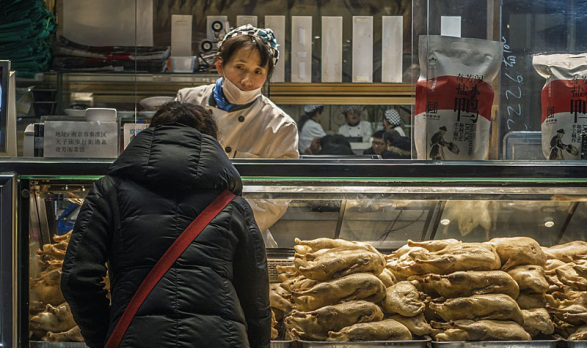
Pressed salted duck is very popular among locals in Nanjing. [Photo/VCG]
Duck Blood and Bean-starchy Vermicelli Soup (Chinese: 鸭血粉丝汤)
Another traditional delicacy of Nanjing is duck blood and bean-starchy vermicelli soup.
The legend behind this dish starts with a poor man in the city who had killed a duck and used a bowl to hold the duck's blood. As he was cleaning the duck, he accidentally dropped some vermicelli into the bowl and found the soup surprisingly delicious. A rich man heard the story and employed the poor man to cook for his family. The dish has been popular ever since.
Vermicelli is the essential element to the soup. It is made of sweet potatoes and features a smooth, soft and waxy taste.
In addition to its visual appeal, the soup will be aromatic and flavorful when coupled with typical ingredients such as duck blood and offal, vermicelli, dried fried tofu, dried shrimp, shallots, ginger, sesame oil and caraway.
Nanjing chefs sometimes add in 20 kinds of Chinese herbs. Some who prepare it with the Chinese herbs believe these ingredients can promote blood circulation, rid the body of toxins, and maintain one’s health and beauty. They say the herbs are helpful for digestion and can keep the stomach warm.
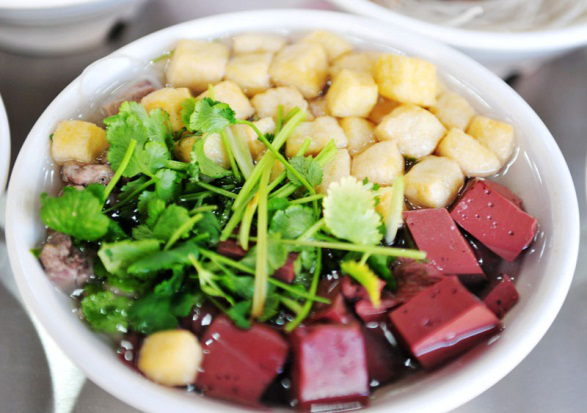
Duck blood and vermicelli soup usually contains duck blood and offal, vermicelli, dried fried tofu, dried shrimp, shallots, ginger, sesame oil and caraway. [Photo/IC]
Pidu Noodle (Chinese: 皮肚面)
Pidu noodle, or noodle with dried pork skin, is one of Nanjing’s most famous traditional dishes. Locals call dried pork skin Pidu. After being boiled, air-dried, and deep fried, the pork skin becomes golden.
With approximately 15 different ingredients, including pidu, mushroom, vegetable and pig liver in a bowl of fresh noodles, Pidu noodle is a filling meal enough for even two adults.
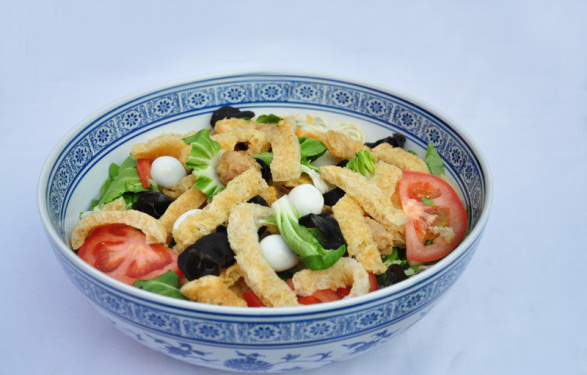
The curly golden strips are sliced pidu, or pig skin, which is boiled, air-dried, and deep-fried. [Photo/IC]
Day 5: West Lake scenic area in Hangzhou, Zhejiang province
Around 300 kilometers away from Nanjing lies another of China's ancient capitals, Hangzhou in Zhejiang province. In addition to being the host city of the 2016 G20 summit, Hangzhou has become a favorite destination for domestic and international tourists and a can't miss spot for visitors to East China.
The West Lake is a must visit scenic area in the city located in the Hangzhou's western downtown area.
It is a lovely mixture of islands, pavilions, villas, courtyards, boulevards, arched bridges, hills, parks, museums, shopping streets, boutique restaurants, monasteries, lagoons and tea plantations. On June 24, 2011, West Lake was added to the World Cultural Heritage list.
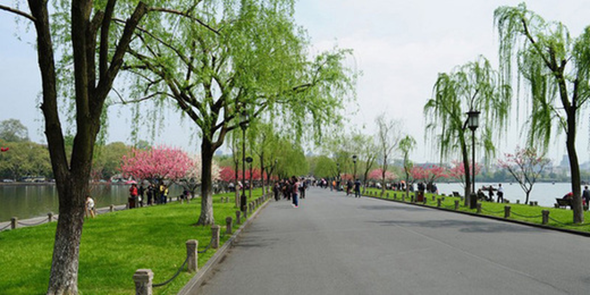
The Bai Causeway in West Lake scenic area [Photo/gotohz.com]
In the morning, you can take a walking tour along the Su Causeway and Bai Causeway that boast serene views from the lake's shore of the calm water, ancient bridges and pagodas.
There are 10 famous attractions in the scenic area, some of which you may encounter when walking along the two causeways, such as the Spring Dawn at the Su Causeway, the Breeze-ruffled Lotuses at Quyuan Garden and Autumn Moon over Calm Lake.
To get a real taste of the lake's charms, take a boat to Xiaoyingzhou, the largest island on West Lake famous for the attraction, Three Pools Mirroring the Moon.
You'll soak in the charms of West Lake feeling the gentle breeze caressing your face and hearing the birds' chirps on the boat ride. The boat can also take you from the serenity of island to the bustle of downtown Hangzhou.
Hubin, literally "beside the lake," is one of the largest shopping centers in the city. There, you can see the modernity of Hangzhou while also trying the city's traditional snacks.
After the lunch at Hubin, take a taxi to Leifeng Pagoda in the afternoon, which is famous for being the setting for the mythological story of Madam White Snake. The pagoda collapsed in 1924 and was rebuilt in 2002. The cultural relics unearthed from it are displayed to the public.
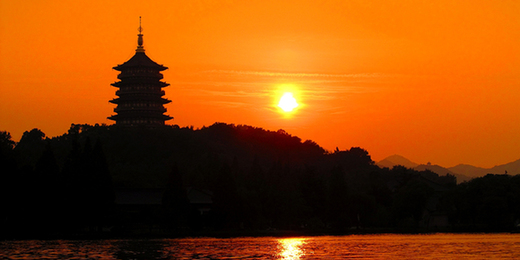
The famous Leifeng Pagoda in Evening Glow scene [Photo/gotohz.com]
If you want to experience Buddhism culture in Hangzhou, Lingyin Temple on the northeast part of West Lake is a perfect destination. You can take Bus Y2 from Leifeng Pagoda to Lingyin. It is the most celebrated place around the lake and one of China's 10 most important Buddhist temples famed for its peaceful environment and profound Buddhist culture.

Lingyin Temple in Hangzhou is one of China's 10 most important Buddhist temples. [Photo/gotohz.com]
Close to Lingyin Temple, there are two famous restaurants featuring Hangzhou cuisines, Tianwaitian and Zhiweiguan. Hangzhou dishes are renowned for its high quality materials, light taste and freshness. After a day's tour, having a dinner in the scenic area is a great way to treat yourself. Dongpo Pork, Beggar's Chicken, West Lake Vinegar Fish and Sister Song's Fish Broth are must-try dishes for visitors.
After dinner, make sure to catch a show near Su Causeway. Impression West Lake, an outdoor real-life show directed by Zhang Yimou (Hero, Raise the Red Lantern, The Great Wall) is staged every night at 7.30pm. It will take you one hour to walk from Lingyin Temple to the performance site or you can ride a shared bike or take Bus Line 7 to get there.
Day 6: Beijing-Hangzhou Grand Canal in Hangzhou, Zhejiang province
The Grand Canal, known as the Beijing-Hangzhou Grand Canal, is always viewed with pride as symbol of China's cultural achievement due to its size and grandeur. It holds historical and cultural importance, and is the longest artificial river in the world.
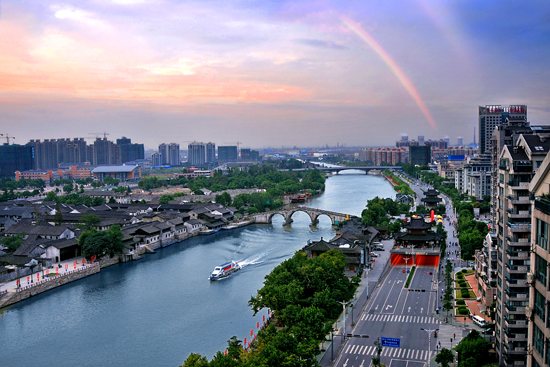
The Hangzhou section of Beijing-Hangzhou Grand Canal [Photo provided to chinadaily.com.cn]
The 1,794-km canal runs from Beijing to Hangzhou in China's Zhejiang province and the Hangzhou section of it has created a distinctive canal culture in the city.
On the second day in Hangzhou, you can take a tour along the longest and oldest manually built canal by boat. Sitting in a boat while floating down the Hangzhou section, you can appreciate the breathtaking natural scenery, bridges and other beauty buildings along the bank. Throughout the boat's journey, there are several attractions worth visiting.
Xiangji Temple, founded in the Song Dynasty (960-1278), is situated on the east bank of the canal. The temple was ruined in war during the late Yuan Dynasty (1271-1368). In 2009, Hangzhou initiated a renovation plan to rebuild the temple and it reopened to the public in 2010. The refurbished temple, covering 16,855 square meters, has embraced a new design in terms of style, composition and construction material with its use of wood and copper.
Gongchen Bridge, built in the year of 1631, is the southernmost point of the Grand Canal. It is also the highest and longest of Hangzhou's many historic bridges.

A night view of Gongchen Bridge over the Grand Canal [Photo/gotohz.com]
Fuyi Cang, a granary along the canal founded in 1884, witnessed the heyday of the rice trade and canal transportation. It's an important part of Hangzhou's cultural heritage, showcasing the rich history of this section of the Grand Canal. As a famous cultural scenic spot, it also functions as a platform for creativity and the arts.
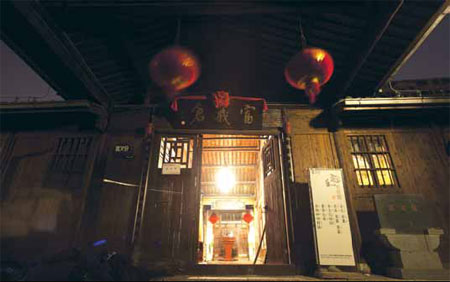
Fuyi Cang, a granary along the canal founded in 1884, is an important part of Hangzhou's cultural heritage. [Photo/China Daily]
There are several museums focusing on Chinese traditional handicrafts along the canal as well. Hangzhou Arts and Crafts Museum, including the China Knives, Scissors and Swords Museum, the China Fan Museum and the China Umbrella Museum, presents precious collections and splendid histories of swords, umbrellas and paper fans.

An assembly hall at the Zhijiang Campus of Zhejiang University [Photo/IC]
After the boat tour, if there's still some time, take a taxi to the Zhijiang Campus of Zhejiang University, one of China's top universities. Along the way, you’ll pass the West Lake scenic area and see the Qiantang River, the mother river of Zhejiang people. The campus is situated beside the river and Liuhe Pagoda. There are 22 time-honored buildings here, making the whole campus a cultural relic site under national protection.

A view of the Qiantang River and Liuhe Pagoda [Photo/gotohz.com]
Last Updated: Aug 30, 2018


